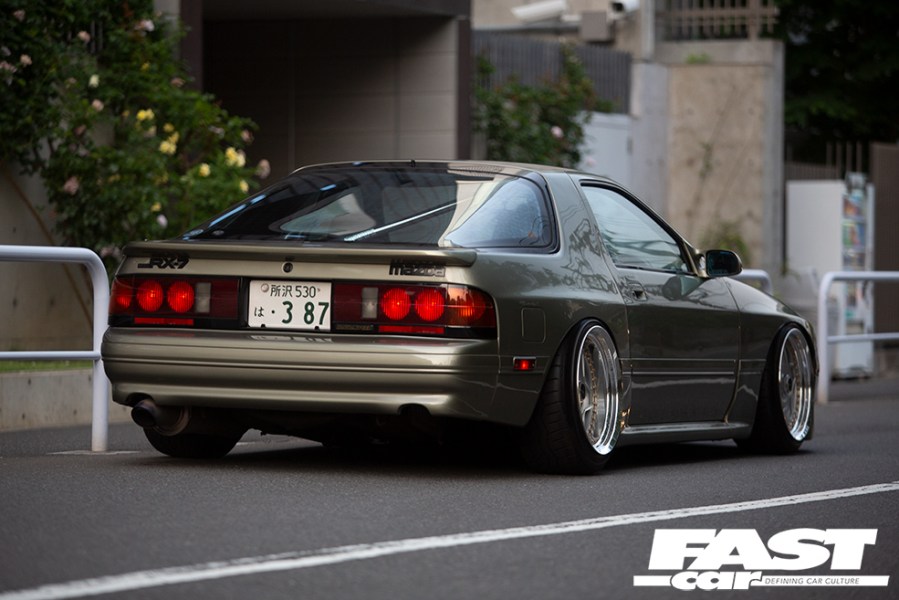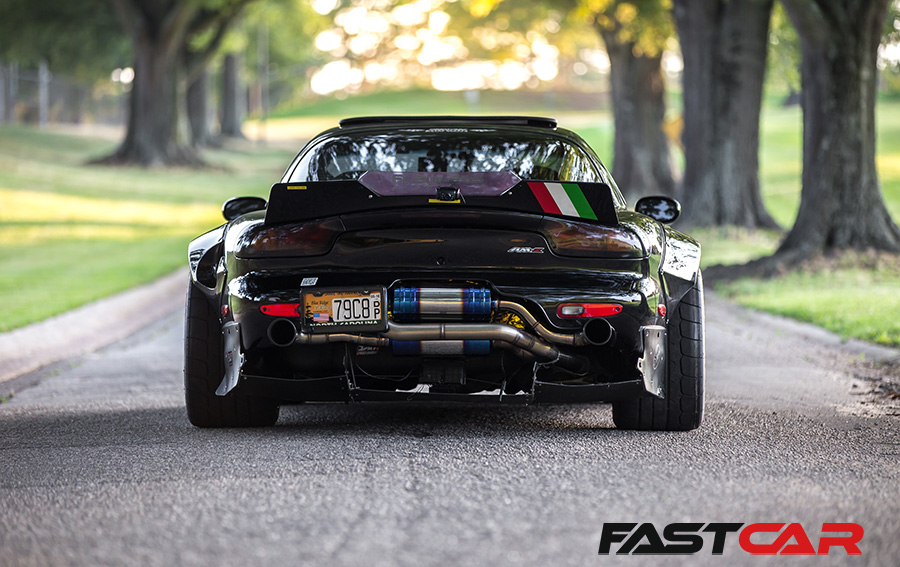Looking for the best exhaust for a Mazda RX-7? Well, here’s some of our top picks from the performance aftermarket.
From the factory, the Mazda RX-7 has a pretty unique exhaust note thanks to its Wankel rotary engine. However, if you really want to let your car sing, we’ve picked out several of the best exhaust upgrades out there to chose from. Below, we’ve broken down options for the FC and FD RX-7 models. There’s nothing quite like the sound of a rotary engine screaming, and the systems below will help to unlock that noise.
Best Exhaust for a Mazda RX-7 FC

What’s it like as standard?
As you’ll probably know, rotary engines like the one found under the hood of the Mazda RX-7 FC run very smoothly at very high RPM. Consequently, these Japanese sports cars have the potential to make a fun ‘buzzy’ sound. However, the FC’s stock exhaust note can come across as a little tame.
While you’re here, be sure to check out our FC RX-7 buying and tuning guides if you’re considering starting your own project.
Racing Beat
American Mazda specialists, Racing Beat, offer several aftermarket exhaust systems for the FC RX-7. If you want your car to remain street legal, you’ll need to retain its catalytic converters; components which are vital for minimizing exhaust emissions. However, that doesn’t mean you can’t improve the way your FC sounds. Racing Beat’s cat-back exhaust system ($895) includes a replacement Y-pipe and a pair of Power Pulse mufflers, and as well as sounding a bit spicier, adds around 7-10PS on the dyno.
But, what if you don’t need your car to remain street legal? Perhaps it’s a ‘track build’. Well, in that case, Racing Beat also provides cat-less exhaust systems which help to derestrict the gas flow, thus improving performance. Their flagship offering is the REV TII exhaust ($1403), which adds a downpipe and pre-silencer into the mix. Overall, you’re looking at a much louder engine note, and up to 60PS worth of power gains!
APEXi
APEXi is one of those brands that will forever be synonymous with JDM performance cars. Ever-present in the ’90s and ’00s heyday of Japanese tuning culture, APEXi naturally has a variety of performance exhausts available for the FC RX-7.
The one we’re looking at here is the N-1 Dual Exhaust System ($1500), which retains the car’s twin-pipe set-up (whereas some other kits transition to a single pipe). This supposedly helps to improve mid-range torque without sacrificing too much at the top end. Be aware that the tips are 3.5 inches wide in diameter, and therefore can look quite ‘OTT’ from some angles. The white car in the clip above is running an N1 Dual system, but for full disclosure it’s also running a downpipe and high-flow cat from another brand. Still, you can get the idea…
HKS
Having been around since 1973, it’s safe to say that HKS knows how to tune a car. This iconic Japanese aftermarket brand produces what it calls the ‘Silent hi-power’ exhaust system ($1062) for the FC RX-7. Crucially, it’s a street-legal cat-back system, which HKS describes as being for the more ‘mature’ enthusiasts. As a result, you get a single-pipe stainless steel design which offers a sportier look than the standard tips, as well as a handful of extra horsepower on the dyno. It’s also meant to give off a pleasant sound without verging on being noisy, as is the case with some other set-ups.
In fact, HKS has gone to quite extreme lengths to reduce the amount of unwanted exhaust noise. For example, the Silent hi-power system uses a ‘silent chamber’ in order to minimize the annoying low frequency drones and vibrations that escape from the car’s exhaust into the cabin.
Best Exhaust for a Mazda RX-7 FD

What’s it like as standard?
The third generation ‘FD’ Mazda RX-7 was a much sportier car than its touring-focused FC predecessor, though interestingly Mazda ditched the twin-exit set-up for a single pipe instead.
Power output was elevated to around 250PS, while the car’s handling traits were also geared more towards the enthusiast. That shift in persona is reflected somewhat in the car’s stock exhaust note. Albeit still a little muted, it’s a fraction more aggressive than the FC – to our ears, at least.
If you’re thinking of starting your own Mazda RX-7 FD project, be sure to read our buying and tuning guides for the car.
Fujitsubo
Despite being a JDM brand, Fujitsubo perhaps doesn’t come with the same level of prestige as the likes of HKS, or APEXi, for example. However, that often means that you won’t have to pay the high price that more desirable brands dictate. For instance, the Power Getter TypeRS muffler sells for a respectable $695 at Nengun.
For the money, you get a 3.5-inch pipe that’s been designed with gas flow efficiency in mind, therefore enhancing the car’s sound and performance. We aren’t talking about a full exhaust here, it’s simply a bolt-on cat-back system, so don’t expect gains of more than 5-10PS on the dyno.
GReddy TRUST
GReddy TRUST is an aftermarket brand name that more of you will be familiar with. In fact, GReddy now has quite a healthy presence in the United States, as well as Japan.
The PE-TR exhaust is a road-legal cat-back system, priced at $950. By pairing the straight-through pipe flow with a Helmholtz canister, the GReddy PE-TR exhaust manages to improve the RX-7’s sound while minimizing the amount of resonance heard from inside the cabin.
That combination seems just about perfect on paper, but what about in reality? Check out the video above to find out.
RE Amemiya
We couldn’t write a piece about aftermarket parts for the Mazda RX-7 without mentioning RE Amemiya. This Japanese tuning house has based its entire image around Mazda vehicles, especially the rotary RX sports cars. So, naturally they supply performance exhausts for them too.
Arguably the most iconic RE Amemiya exhaust system is the 90Curl Dolphin Tail Muffler. A name as unique as that is hard to forget, and amongst a sea of wide-diameter exits, this system’s downturned tip stands out too. At Nengun, you can purchase just the muffler alone for $764, or buy it with an accompanying center pipe for $1111.
The reason for angling the muffler’s tip downwards ultimately comes down to noise reduction. By shooting the exhaust’s sound waves down into the ground, they don’t travel as far, making for a more tolerable experience on the street. Don’t get it twisted though, the 90Curl Dolphin Tail is still louder and raspier than stock.





